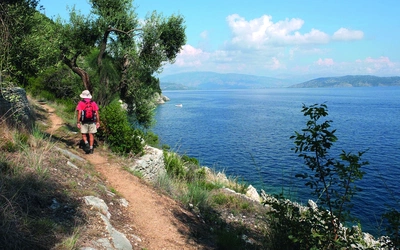
Article

Greece, Corfu and Crete can offer a long walking season especially in Spring and Autumn. The Greek Pindos mountains form a spine for this rugged country. Here the landscape is often quite rugged, dotted with ruins, evocative of another era. Corfu, the Greek island so loved by Gerald Durrell and his family, provides a beautiful escape from the busy coast, with day walks and the Corfu Trail, running the length of the island.
5 Books Available
7 Articles Available